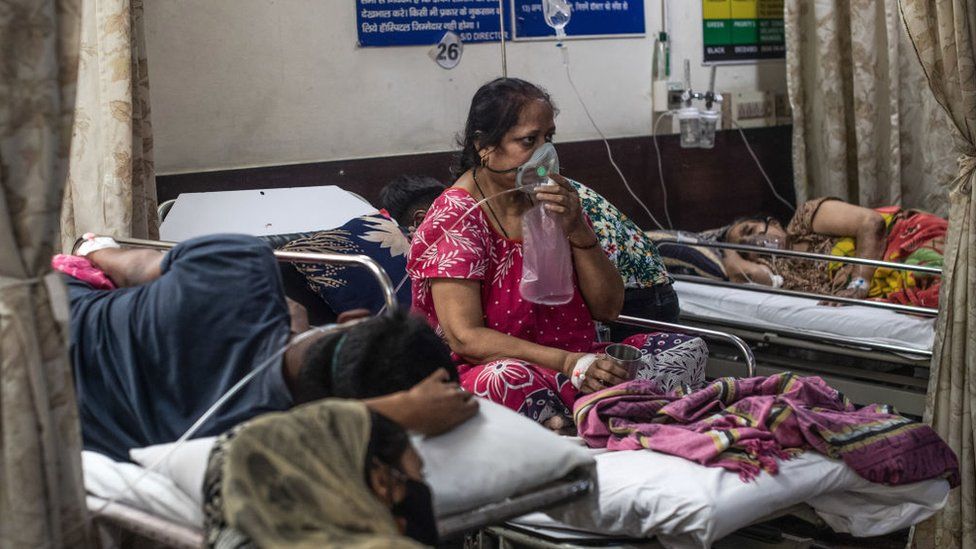 Addis Ababa, May 04, 2021 (Walta) – India has recorded more than 20 million Covid infections, but the government says that cases are “slowing down”.
Addis Ababa, May 04, 2021 (Walta) – India has recorded more than 20 million Covid infections, but the government says that cases are “slowing down”.
The country added more than 355,000 cases on Tuesday, down from more than 400,000 daily cases on 30 April.
But testing numbers have dipped as well, sparking fears that India’s true caseload is far higher.
Case numbers, however, been consistently falling in Maharashtra state, which had driven the second wave since early April.
Meanwhile, an oxygen shortage has shown no signs of abating, and people in several hotspot cities, including the capital Delhi, are struggling for treatment.
India’s second wave, fuelled by lax safety protocols and massive public festivals and election rallies, has also overwhelmed its hospitals. Delays in testing, diagnosis, and treatment, as well as a shortage of critical care beds and crucial drugs, have resulted in a spike in deaths too.
The country has so far reported more than 222,000 deaths due to the virus. But experts say India’s Covid death toll is vastly under-reported as official tallies don’t appear to match what people are witnessing on the ground – long lines at crematoriums, mass funeral pyres, and cities running out of space to bury or cremate the dead.
Many states have introduced restrictions, from full lockdowns to night curfews. The northern state of Bihar, which has been adding about 13,000 daily cases in recent days, is the latest to announce a full lockdown -only essential services, such as government offices, groceries, and hospitals, will be open.
While India’s daily caseload does appear to have fallen, it’s too early to say if infections are slowing down.
Given delays in testing and official record-keeping, experts typically look at weekly averages rather than daily cases for a more accurate picture. And on average, India’s cases were rising this past week – but at a slower rate than the previous week.
But it’s also true that daily cases have fallen, on average, in Delhi, Uttar Pradesh, and Maharashtra, all hotspot states, according to BBC.
Erratic testing, however, makes it hard to gauge the significance of these numbers. While Maharashtra’s testing numbers have been consistent, Delhi’s have dropped in recent weeks.
The other issue, experts say, is insufficient testing. While Uttar Pradesh, one of the worst-affected states, has recorded no drop-in testing figures, it’s testing far less than other states.
It’s India’s most populated state, with more than 220 million people, and is doing about 184,000 tests per million people. Compare that to Tamil Nadu, which has about 75 million people and is doing more than 300,000 tests per million of its population.